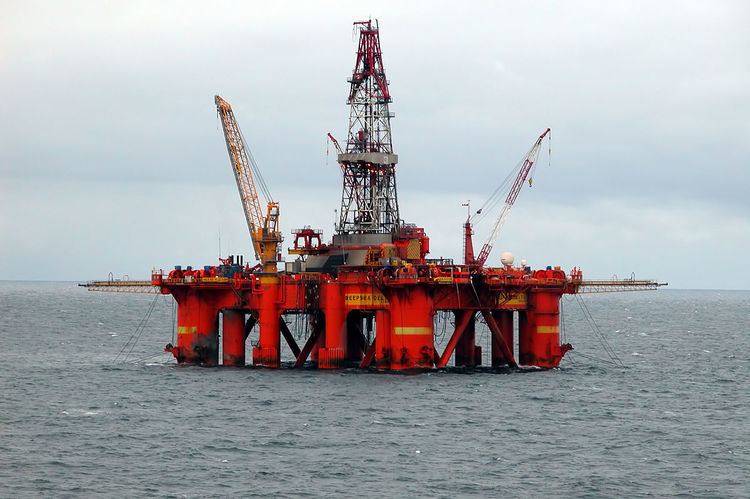 | ||
Denmark has considerable sources of oil and natural gas in the North Sea and ranked as number 32 in the world among net exporters of crude oil in 2008. Denmark expects to be self-sufficient with oil until 2050. However, gas resources are expected to decline, and production may decline below consumption in 2020, making imports necessary. A large but decreasing proportion of electricity is produced from coal and nuclear energy imports, while wind turbines supply the equivalent of about 42% of electricity demand by 2015 (see Wind power in Denmark).
Contents
In February 2011 the Danish government announced the "Energy Strategy 2050" with the aim to be fully independent of fossil fuels by 2050, and a new government repeated the goal in 2015 despite public scepticism. The European Renewables Directive set a mandatory target at 20% share of energy from renewable sources by 2020 (EU combined). In 2012 the Danish government adopted a plan to increase the share of electricity production from wind to 50% by 2020, and to 84% in 2035.
Denmark's electrical grid is connected by transmission lines to other European countries, and had (according to the World Economic Forum) the best energy security in the EU in 2013 although this had fallen to third in the EU by 2014. Denmark imports around 12% of its energy.
History
In 1972, 92% of Denmark's energy consumption came from imported oil. The 1973 oil crisis forced Denmark to rethink its energy policy; in 1978 coal contributed 18%, and the Tvind wind turbine was made, along with the creation of a wind turbine industry. The 1979 energy crisis pushed further change, and in 1984 the North Sea natural gas projects began. The North Sea production of oil and gas made Denmark self-sufficient in 1997, peaking in 2005, and decreased below self-sufficiency by 2013.
The year 2014 was the warmest on record in Denmark, with the lowest number of degree days in history. A normal year has 2,906 while 2014 saw only 2,100 degree days. Since 2000, Denmark has increased Gross National Product and decreased energy consumption.
Energy taxes
1Not applicable for industry
Fuel is not taxed for ships and planes to other countries. Coal and gas for electricity is not taxed.
Minor taxes are called "Compulsory storage fee" and "NOx tax". Carbon dioxide tax is 0.09 DKK/kWh for electricity. Fossil fuels are taxed at about 90 DKK/ton CO2.
Energy taxes contributed 34 billion DKK in 2015, about 12% of overall taxing revenue. The money is a considerable income for the state, and changing the composition of the taxes towards a "greener" mix is difficult. According to a government official, the majority of taxes are not based on environment concerns, in contrast to the DKK 5 billion per year in PSO-money for cleaner energy, paid by electricity consumers to producers of clean electricity. These tolls are not available for government consumption.
Electricity
The electricity sector relies on fossil, nuclear and renewable energy: wind power, biogas, biomass and waste. No hydro power is produced domestically and other countries' hydro and thermal power is used for buffering Denmark's renewable generation. The average consumption of electricity per person was 0.8 GWh less than EU 15 average in 2008. Denmark invested in the wind power development in the 1970s and has been the top wind power country of the world ever since. Danish consumption of wind electricity has been highest in the world per person: 1,218 kWh in 2009. Denmark produced more wind power per person in 2009 than Spain or the UK produced nuclear power.
Denmark has mediocre electricity costs (including about DKK 5 billion in costs for cleaner energy) in EU for industries at 9eurocent/kWh, but general taxes increase the household price to the highest in Europe at 31eurocent/kWh.
Transmission costs are around 1c/kWh, and support regimes cost 2½c/kWh in 2014.
Wind power
Wind provided 39% of the electricity generated in Denmark in 2014, and 42.1% of Denmark's total electricity consumption in 2015. Denmark is a long-time leader in wind energy, and as of May 2011 Denmark derives 3.1 percent of its Gross Domestic Product from renewable energy technology and energy efficiency, or around €6.5 billion ($9.4 billion).
To encourage investment in wind power, families were offered a tax exemption for generating their own electricity within their own or an adjoining commune. While this could involve purchasing a turbine outright, more often families purchased shares in wind turbine cooperatives which in turn invested in community wind turbines. By 2004 over 150,000 Danes were either members of cooperatives or owned turbines, and about 5,500 turbines had been installed, although with greater private sector involvement the proportion owned by cooperatives had fallen to 75%.
District heating
Danish district heating plants use 100 Petajoule/year, mostly waste heat from thermal power plants burning coal, natural gas and biomass, but a small part of this consumption is from electrode boilers or heat pumps. Expansion of wind powered district heating is calculated to be economically efficient without taxes. The peak thermal load of district heating in Copenhagen is 2.5 GWth, and simulations suggest a potential heat pump would run 3,500 load-hours per year using sewage water as the heat reservoir.
In 2013, Denmark imported 158,000 ton garbage for incineration in 10 district heating plants, increasing to 323,963 ton in 20 plants in 2015, about 10% of burnt waste.
The pipe heat loss is 17%, at a value of DKK 150 million. New pipes have a heat loss of 6.5%. There are 60,000 km of pipes, serving 1.6 million households. Several towns use central solar heating, some with storage.
Transport
Denmark aims to focus on intelligent battery systems (V2G) and plug-in vehicles in the transport sector.
Tax revenue from vehicles was 28 billion DKK in 2014.
Cities
Copenhagen has a target to be carbon-neutral by 2025, and has burned more biomass and less coal during 2004-2014.
Aarhus aims to be carbon-neutral by 2030.
